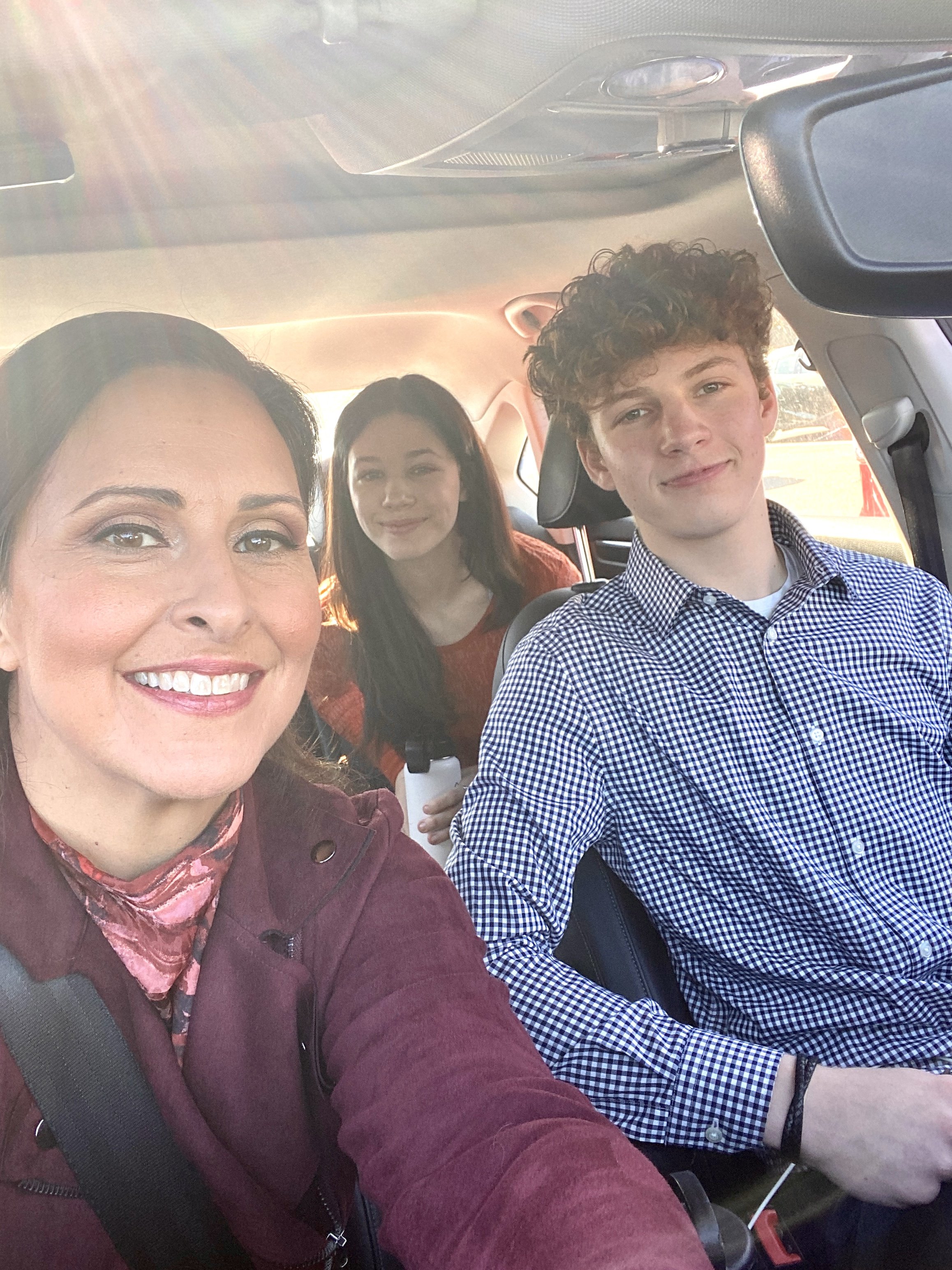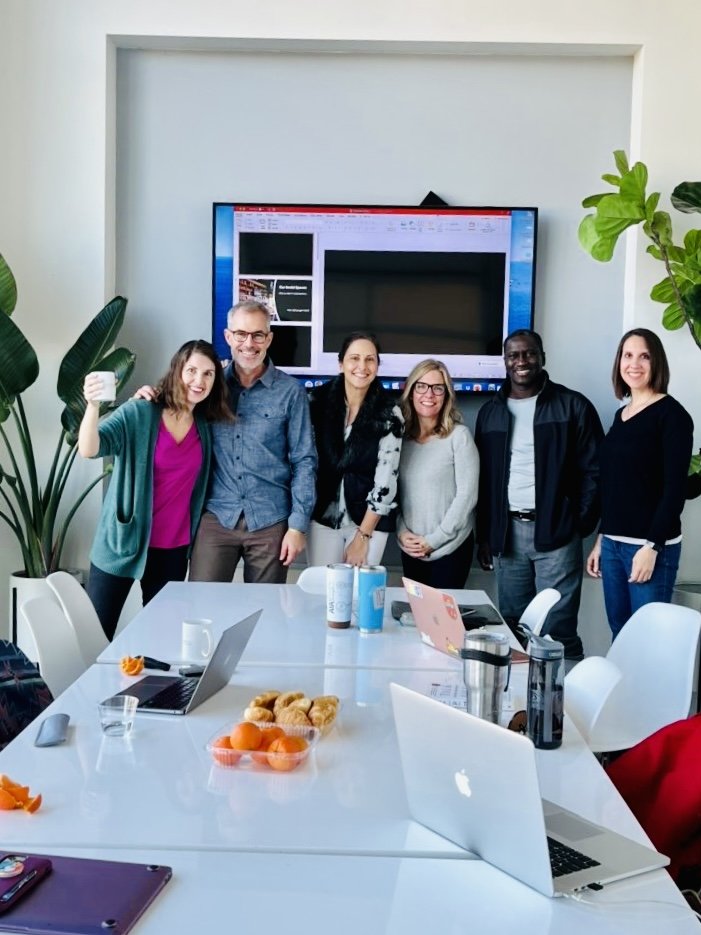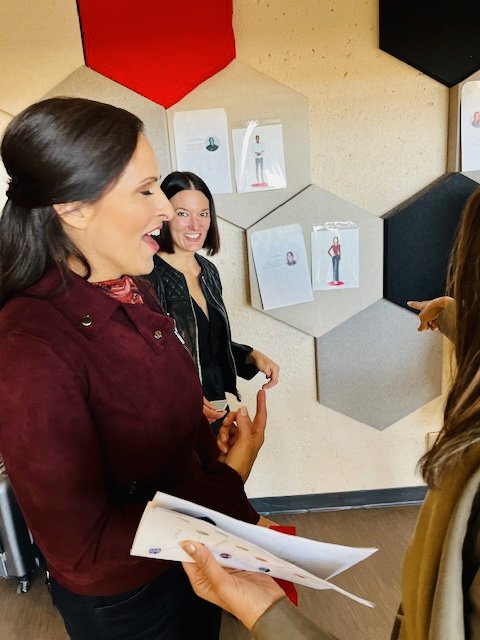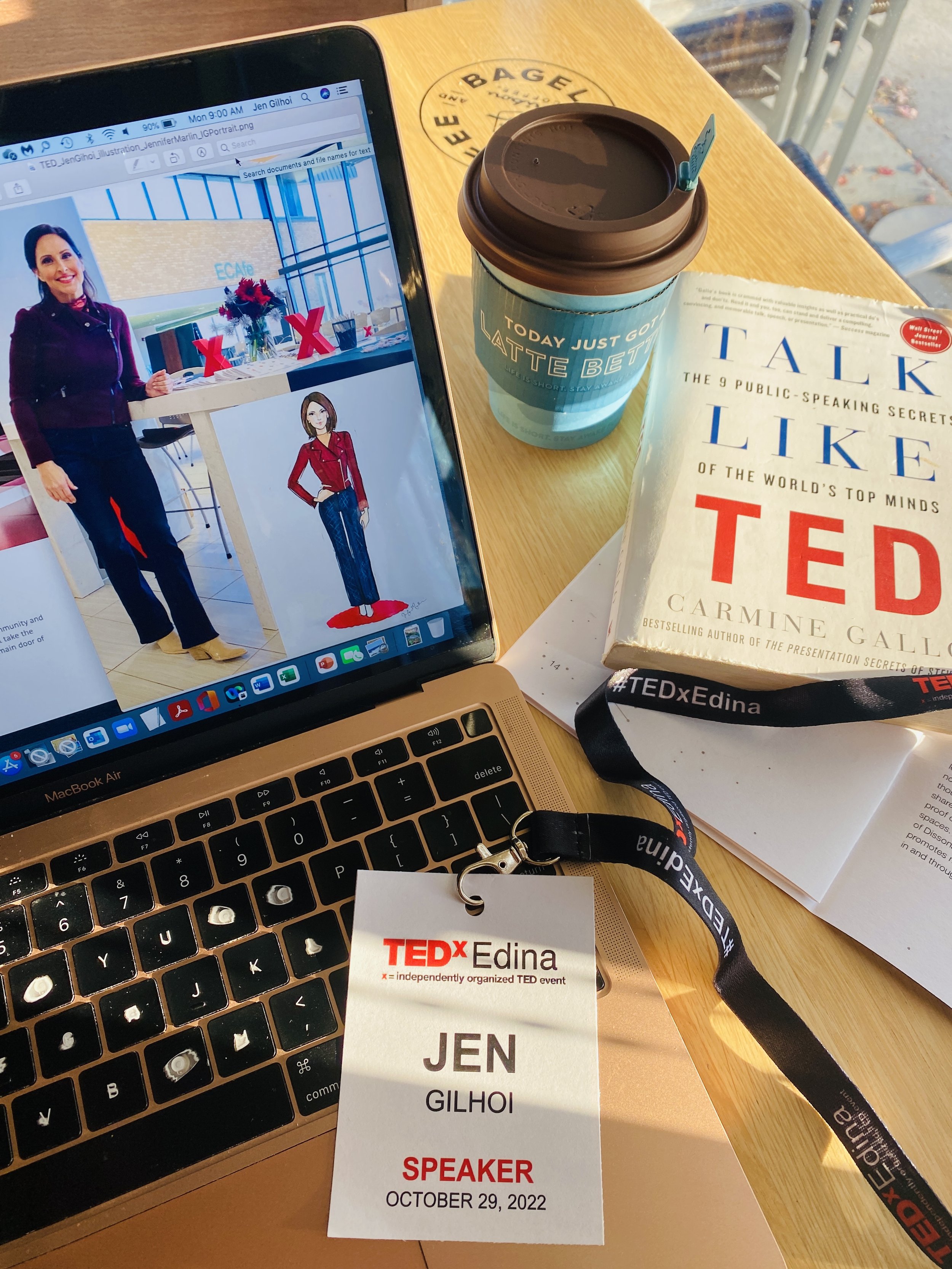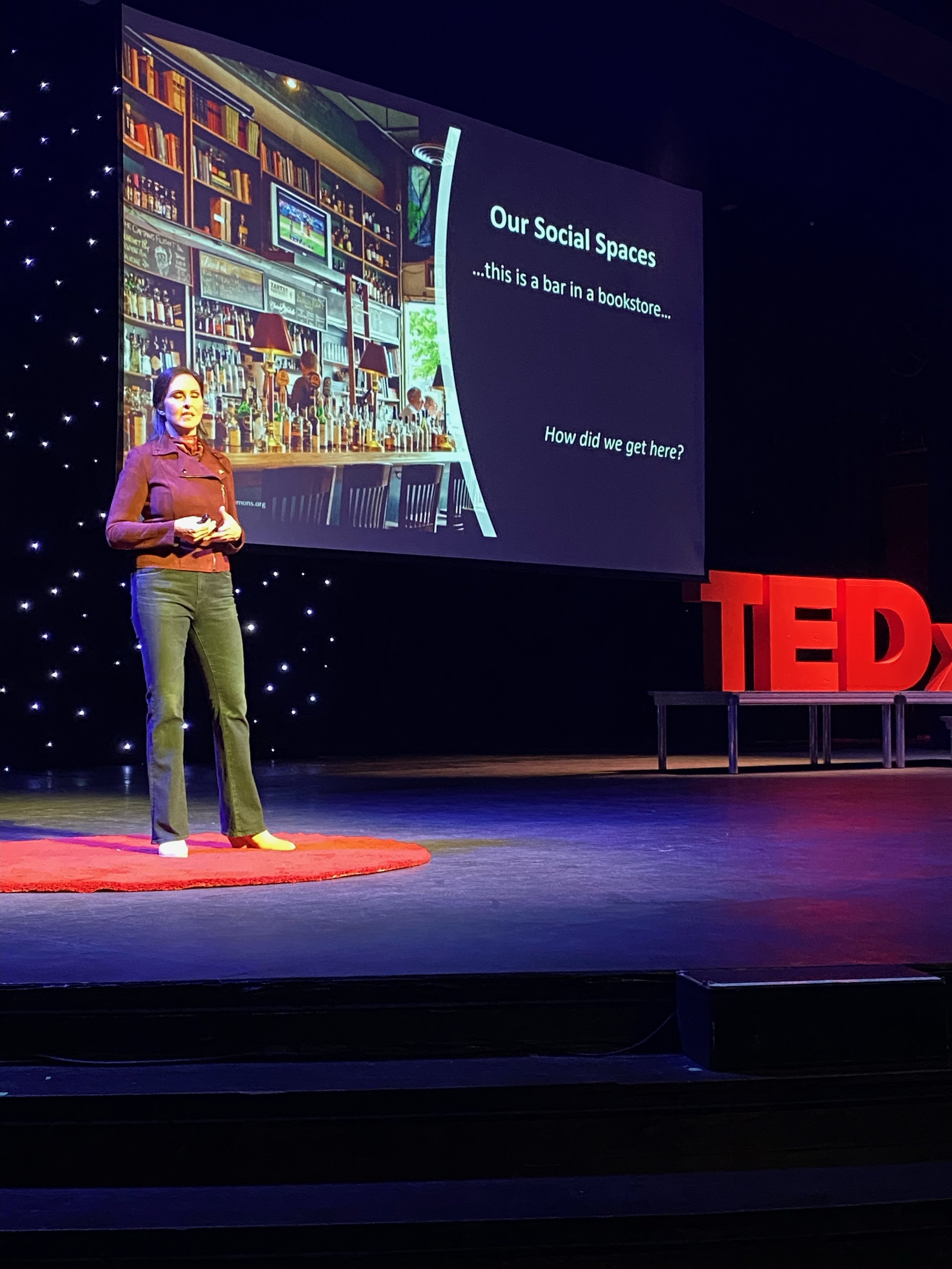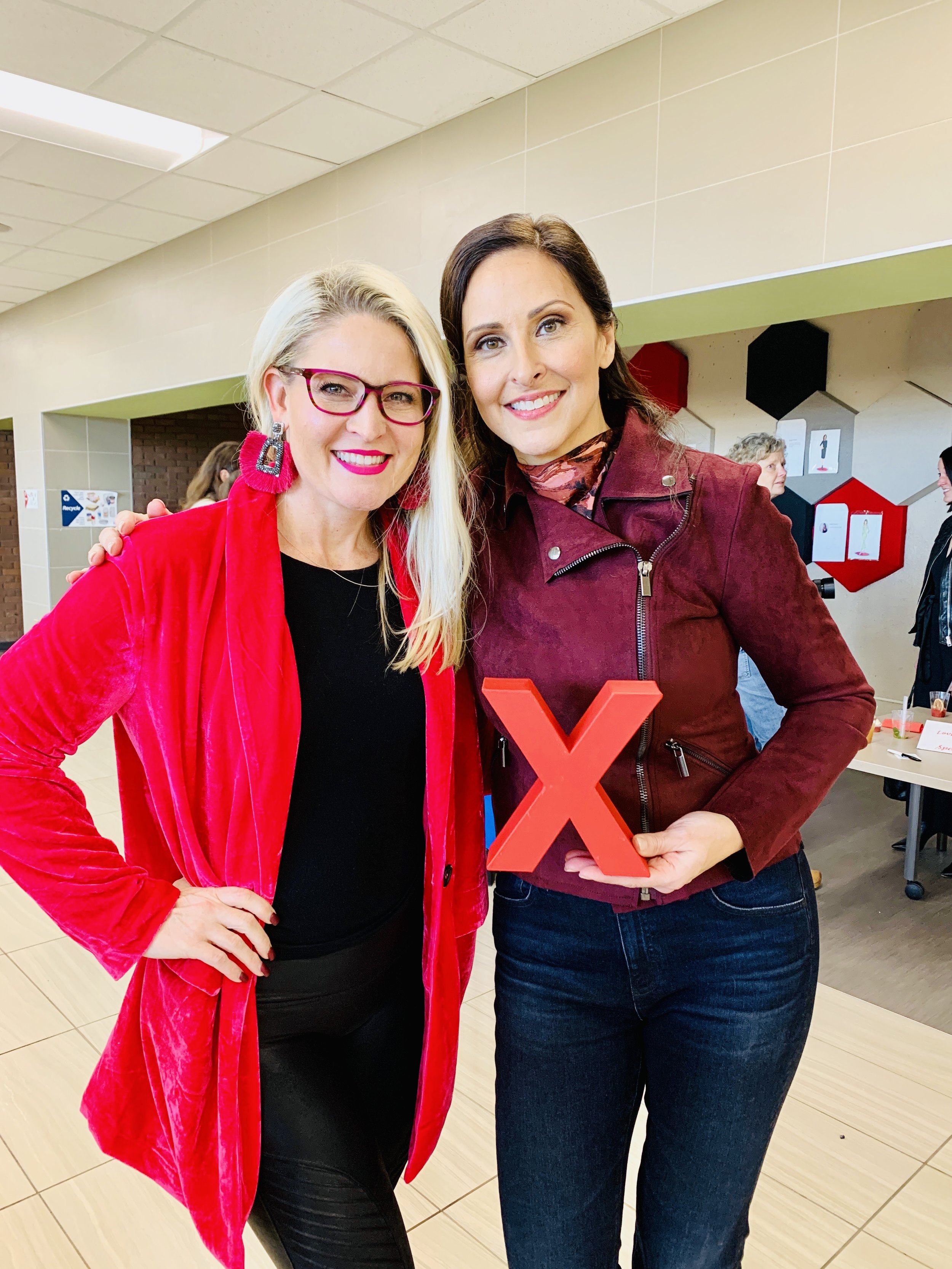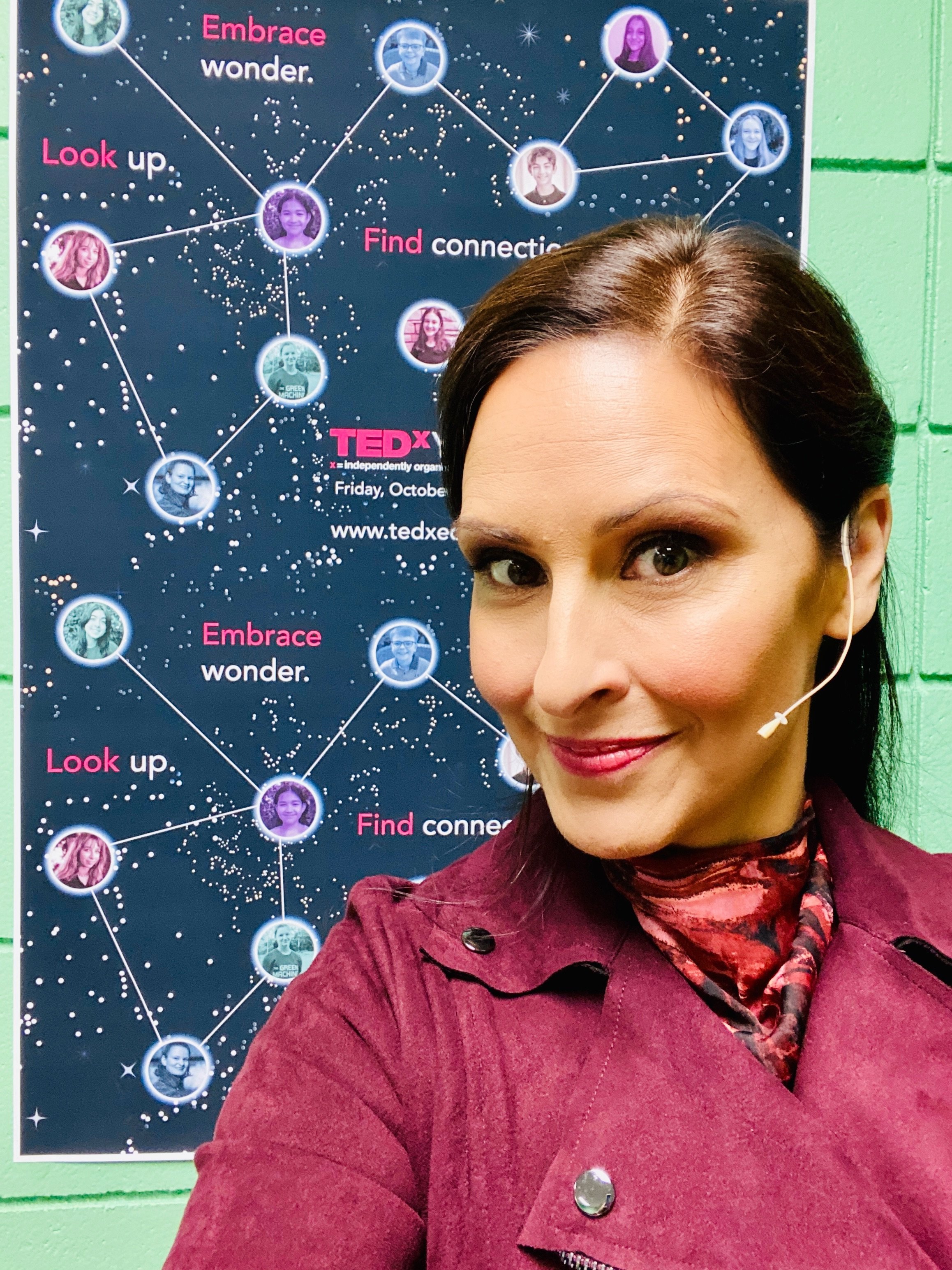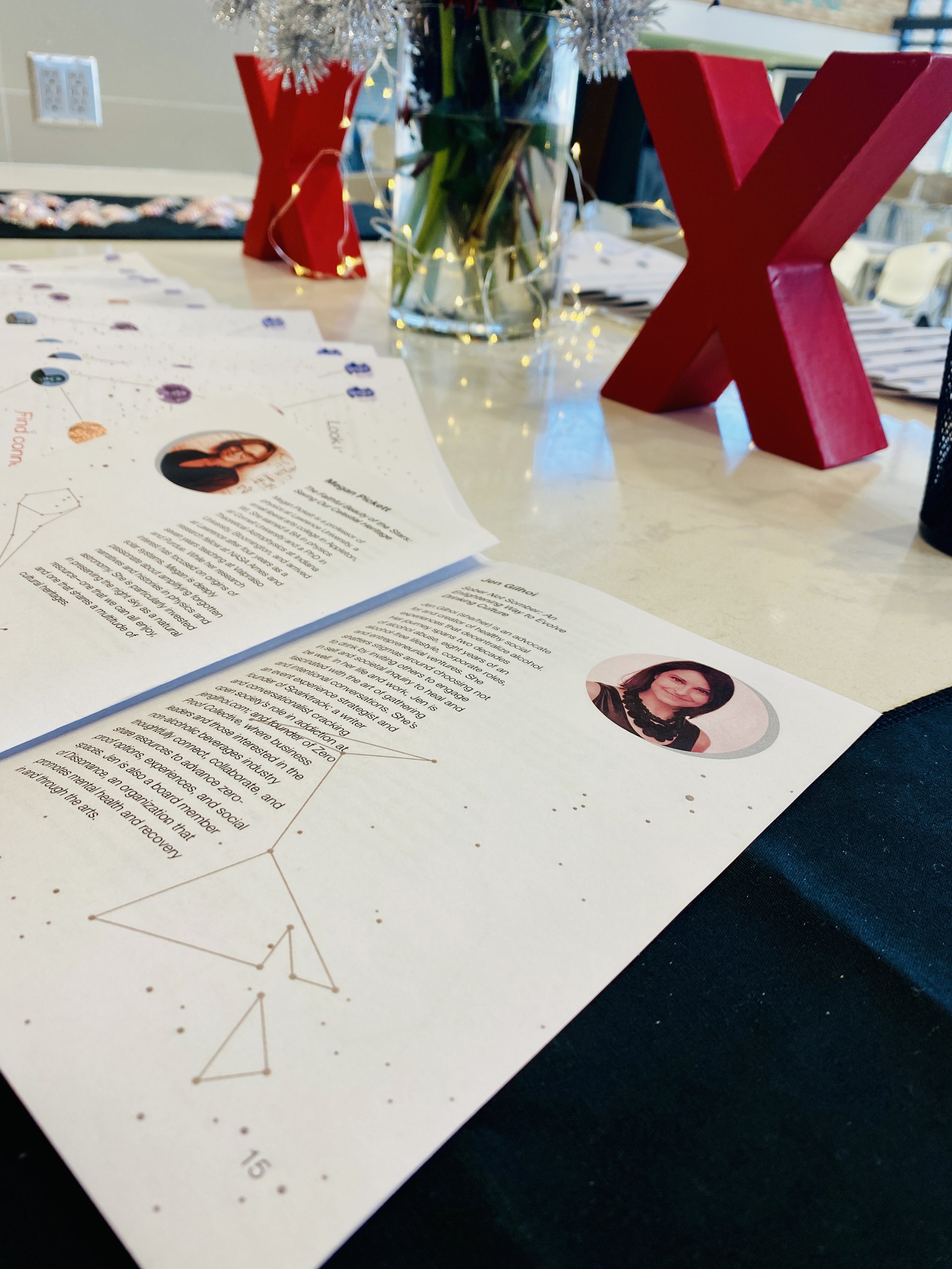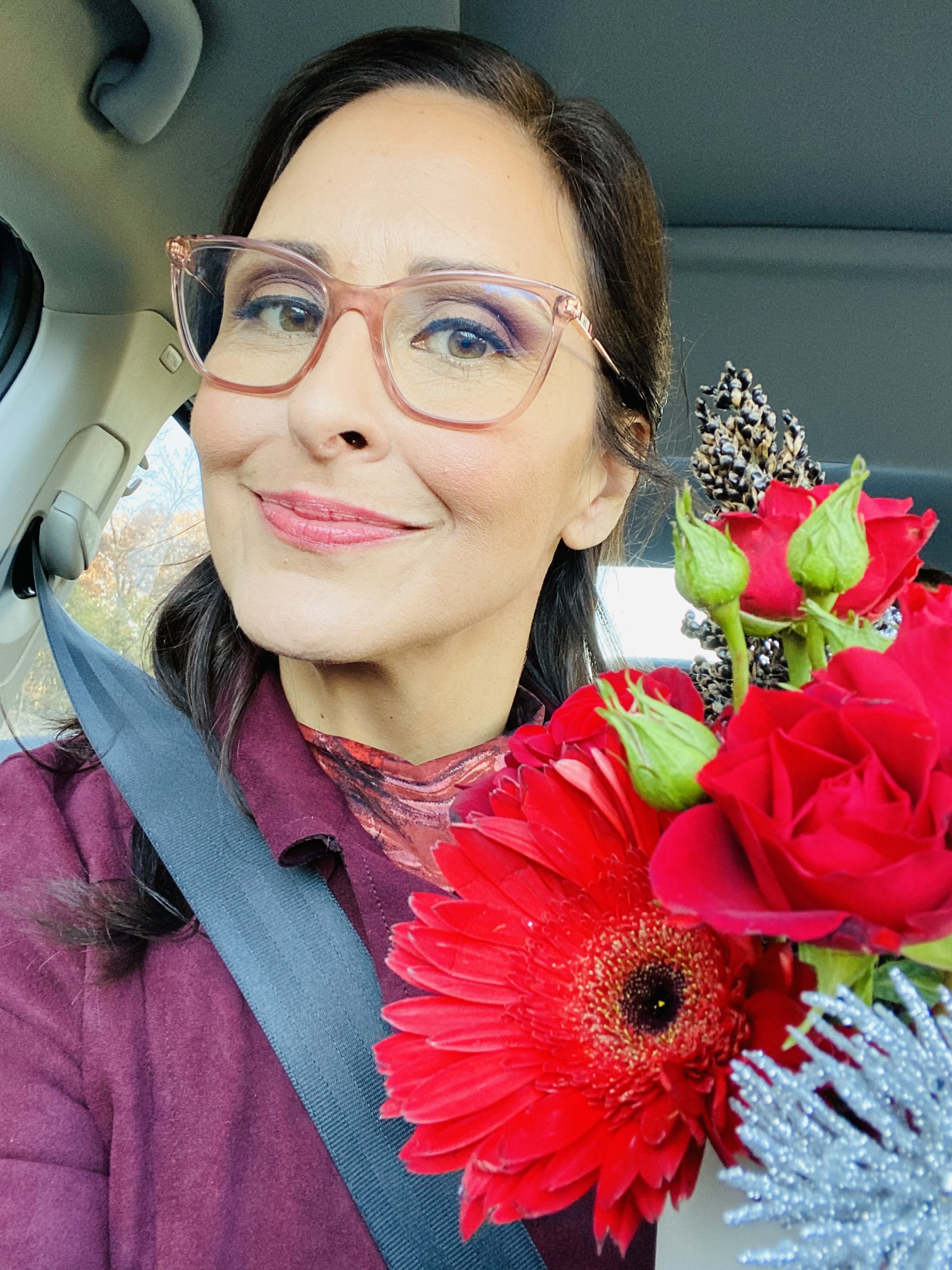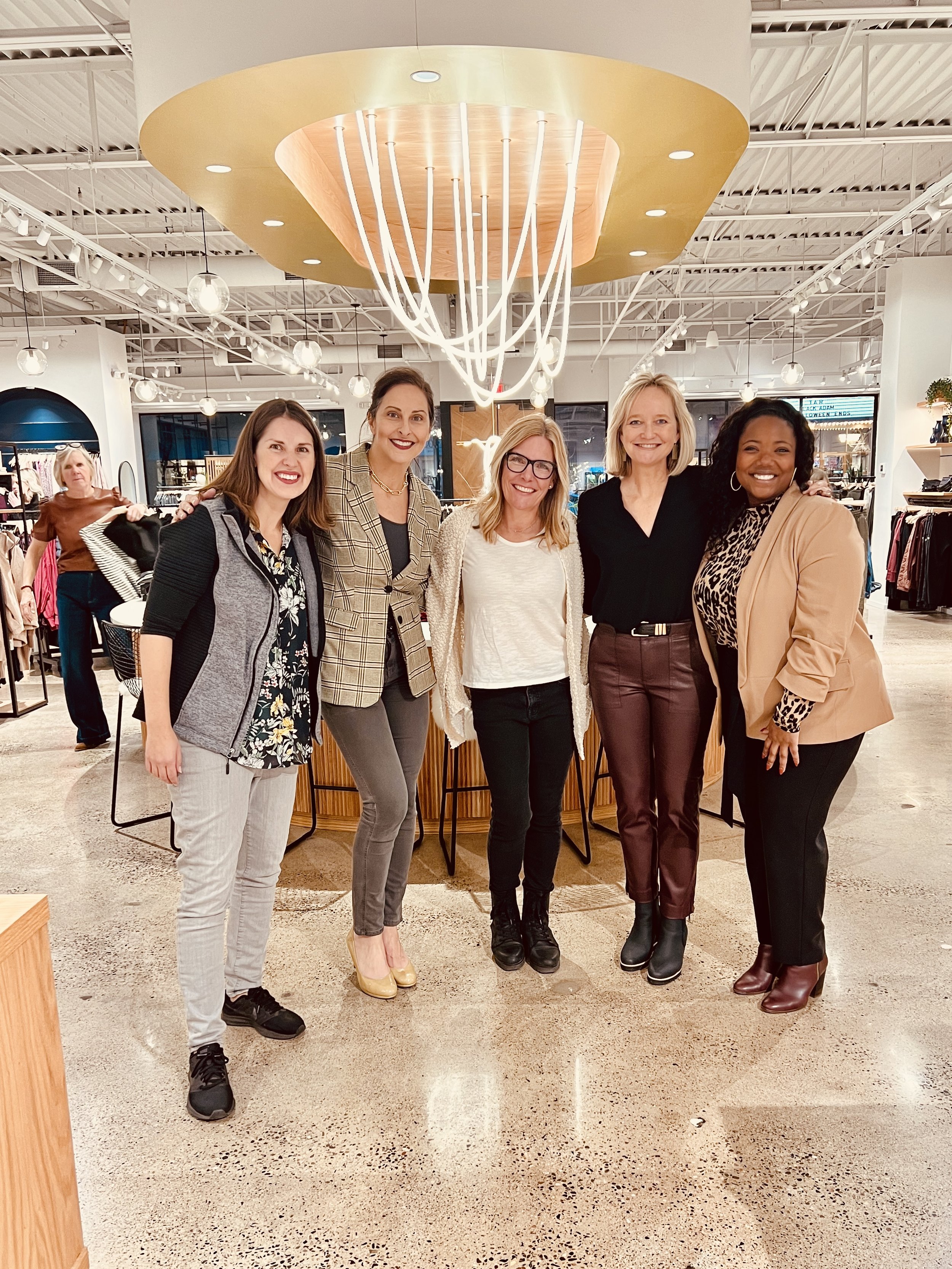Behind the Scenes: The TEDx Talk Process for Speakers
In January 2022, I felt a restlessness that could only be associated with birth. A new idea urgently needed to find its way into the world. The idea, born of a lived experience of sobriety, was to evolve our social spaces to support anyone who chooses not to drink alcohol for whatever reason. The platform to share this idea – the TEDx stage – found its way to me. It was never on any of my vision boards, nor was public speaking a particular skill set I wanted to develop or exercise. Despite those factors, I didn’t hesitate to submit my application. I was drawn to the concept of TED (ideas worth spreading), the reassurance that the speaking skills and delivery could be learned, and the intention and guidance I’d receive throughout the experience.
By the time my talk is available online (hopefully April 2023), the entire process of shaping it and delivering it will have taken over one year. As I reflect on the process today, nearly two months after taking the stage at TEDxEdina on October 29, 2022, I can see the growth, insights, and potential inherent in it. Where I started seems a far cry from the final, finished product. I credit that to this delicate balance demanded of a TEDx speaker – to stay absolutely in your story (why you, why now) and to discern how the message you’re passionate about resonates in the world, paired with research, truth, and specificity. Ultimately answering: Why is your idea worth spreading? and How will you inspire others to champion your idea with awareness and action?
With thousands of talks available online, most of us consume the polished finished result assuming any given speaker was a practiced public speaker at the onset of their TED journey. Not necessarily so and not in my case. I share my behind-the-scenes journey here as its not typically disclosed, and if you’re someone who has an idea worth spreading, this may answer some questions and open you up to going for it!
The Application
In my application, my big idea was: If society worked to create better sober experiences, we'd have less alcoholism in the U.S. I went on to say: In typical U.S. fashion of addressing national health crises, the recovery culture in America is focused on cleaning up the tragedy of an individual’s alcohol misuse after lifelong and devasting occurrences. We completely overlook the prevention, acceptance, and access side of the equation and society’s role in creating better sober experiences and environments. As a society, if we were to understand our role and hold those profiting from excessive alcohol consumption accountable, we could greatly decrease alcoholism and related negative outcomes.
And while the idea and context remained true to my vision for the talk, the assertion of reducing alcoholism couldn’t be validated in a scientific way, and the impact of normalizing not drinking was broader than reducing alcoholism. I ended up shaping my talk to encourage everyone to consider their relationship with alcohol free of labels like alcoholic. Shifts in the language and story supported this and fueled the three-minute audition I memorized in the next part of the process.
The Audition
TEDxEdina organizers sifted through 160 submissions and selected 40 speakers to go forward to audition April 28, 2022. The goal of these three minutes was to distill the big idea in a few bullet points using clear, compelling language; and convince the organizing committee that I’m the right person to give a talk on this idea.
I asserted: America’s love affair with this social lubricant has to end. Let’s get sober curious about society’s role in centralizing and glamorizing alcohol. Here are three places to start:
#1 Shattering stigmas around not drinking
#2 Holding big alcohol accountable for marketing and pressing for full disclosure: alcohol is a highly addictive drug, it is, in fact, ethanol
#3 De-centralizing alcohol in our social spaces
And I shared: I’ve been alcohol-free for seven years. But I’m still not free of the incredibly annoying question I’ve been getting in social spaces for years: Why aren’t you drinking?
The audition took place on the actual red carpet in the actual auditorium we’d be presenting if we were chosen, which was hugely helpful. Those who auditioned gained a sense of the space and movement, where to focus when delivering the talk, and the pace of speech. Later, I’d refer back to this experience with confidence and visualization techniques.
There was a modest audience of 50 who were instructed to provide feedback. One person shared directly with me: “I wanted to know more about your specific experience as a person in recovery going into unsupported social spaces. I think many people have an emotional attachment to alcohol – even those who are not in recovery. My boyfriend and I both felt resistance to your message. Like our initial gut instinct was No, don’t take the alcohol away.” I appreciated this person’s candor and although I couldn’t convey as much in the three minutes, I definitely wove my personal experiences in social spaces into the talk and even the language – no, don’t take it away – made the final cut, delivered as a plea I felt at my core when I was removing it from my life eight years ago.
The Editing… and More Editing
By the end of May, TEDxEdina announced the 11 speakers who would be going forward on the stage in October 2022. I tallied it up – five full months to prepare. I wondered how that amount of time would feel, how I’d move through the unknown and the process, and if I’d feel overcommitted given my other responsibilities and business ventures. In hindsight, somewhere between 4-5 months seemed right from my perspective.
I spent June in my head, thinking about the talk and prepping for a milestone birthday event where I’d share my audition, capture images, and build excitement for my talk: Five Decades, Now Flight. In July I began working with two fellow speakers to bounce ideas off of and share inspiration, both Ashley Smith and Delaine Teabout Thomas were a Godsend for my mental state and encouragement. I finalized my outline and estimated length, turning it into the organizing committee on August 1. I also wrestled with a title for over a month, initially landing on “Normalizing Not Drinking,” which would ultimately become “Sober Not Somber: An Enlightening Way to Evolve Drinking Culture.”
August was filled with draft after draft rewrite while I sought a TED coach of sorts. I was seeking one solid person whom I could trust throughout the process to give me meaningful feedback and push for the best version. That person, Renee Dineen, was a gift! A connection of my husband’s from decades ago, I caught up with Renee early September and learned she is a TEDx Speaker (Renee’s Talk), passionate about coaching women to purpose, and is all in for advancing sober options and the movement rooted in her husband’s eight years of alcohol-free living. We worked together during the two months leading up to the talk and I can’t sing her praises enough, along with the general idea of having that one person who’s got your back!
The Talk Architecture and Shaping
The widespread popularity of TED has created a wealth of resources for how to structure a talk. Renee shared Architecture of the Talk from The Idea Collective with seven themes. It immediately clicked for me. I reworked my talk into that structure, which drew out areas I needed to expand on like personal story. It also meant ditching other directions in the original talk that would need to be cut in the name of focus and resonance. For example, I had to cut entire segments on labels; a path of awareness, non-judgment, empathy, and acceptance around alcohol use and misuse; the historical connection of alcohol and celebration; parallels between big tobacco and big alcohol; and the reality of before/during alcohol use and the morning after.
One could certainly go down endless rabbit holes watching talks online. I chose to research and watch a few select TED(x) Talks including talks on alcoholism (the brain science of addiction, personal sober stories, gray-area drinking), and popular talks demonstrating best uses of visuals, body language, cadence, and expression. I limited solicited feedback as I could exert too much time and energy exploring many different paths, mainly taking my feedback from everyday conversations. I intentionally relied on one trusted person, Jeremiah Gardner -- who is a fantastic editor, works daily in the recovery community, and has his own personal lived sober experiences -- to review for language, and the most compelling way to communicate an idea. (We co-authored an article for Hazelden during Sober October, with elements of the talk)
The Rehearsal
With at least 87 archived versions of my talk on paper, it was time to start the memorization process. I had been cautioned not to start that too early because if you think memorization is hard, try un-memorization. I thought my talk was fairly set, but it would continue to evolve — a lot. I had just started working with Renee early September, which meant working intently toward the September 20 rehearsal date for two weeks. Admittedly, much was still in flux in the written form up until the last moment. Luckily, speakers could read from our script for the rehearsal, which I fully did. I was grateful for that option as the organizing committee gave me more feedback that I incorporated. It would have been monumentally more challenging to edit had I already memorized everything. Their feedback found me calling out stats, describing nonalcoholic options with a visual, and consolidating two lists into one action-oriented list for attendees. I continued to hone the final visuals to submit by October 10, ending up with only 10 slides.
Memorization and Movement
About a month out, I began memorizing in earnest. Prior to that date I had tested out the process with a few paragraphs to assure myself it was indeed possible to memorize under 18 minutes of content, the max allotted time for a TEDx Talk. While I’m happy I did that for the peace of mind it provided, I also had to unlearn that memorization when the final edits were set as the flow and language evolved.
In the final week leading up to the talk, I enlisted one last guide, Melinda Marr – an expert speaker who could help me focus on my movement, gestures, expressions, pauses, and voice. At this point, I had audio recorded myself daily for three weeks and was strictly focused on memorization. Melinda helped me practice moving/ swaying less, grounding myself but freely turning my upper body more to hit points, and only moving across the red carpet during talk transition times.
The Talk: Day of and Delivery
The week leading up to the talk, I kept my schedule as open as possible for moments of fun, socializing, and relaxation. I reminded myself that I had prepped for months so while the days prior to the talk felt unsettling, I also recognized that there wasn’t much more to be done. I had worked with stylist Jodi Mayers early October, and Brian Rice and Katie Pribyl would be on hair and makeup, respectively, in the day(s) prior.
The day before the event, I hosted fellow speakers at my co-working space, ModernWell, so we could support each other and hear a bit of our talks. I was especially grateful for this as I was scheduled to be 10 of 11 in the line-up and would therefore (by my own option) not have the opportunity to hear everyone else. Over the course of the morning, the energy was so supportive! When it came time for my share at the end, I wasn’t anticipating the memorization roadblocks I encountered. Chalk it up to stress, the buzz of the morning, comparison, or simply depleted energy – I had to pause and check my script several times. I worked through it, but spent a great deal of that night anxious about the following day – delivery day. What if that same experience happened again?
When I arrived at the auditorium, my kids were at my side. Ages 17 and 19, they could sense the significance of the event, yet were a calming and supportive presence all day. I arrived at the greenroom, miked up, kept my body in motion, and focused on breathing. Ten minutes prior to going on, a fellow speaker, Ross Wehner, assured me I’d do great. He was sure I’d experience what he’d experienced earlier that day – a moment of clarity when stepping on the red carpet. I chose to believe that. He was absolutely right. For someone who likes introversion, I marveled at how I arrived at this moment. It was sheer passion for the idea that led to this moment. It had demanded that the fear, doubts, and hesitations step aside.
I stepped on to the red carpet where there was only room for the power of boldly sharing an idea with the world. I expected it to feel amazing after the talk, but it was unexpectedly exhilarating during the talk. I was present for it, willing the idea to spread, and visualizing how it could inspire positive, needed change in the world. At the end of the talk, I exhaled, stepped off the carpet, and would patiently go inward to recharge and await its release.
———
TEDxEdina is currently editing the talks given October 28 (TEDx Youth Day) and October 29. It’s anticipated they will be online in January 2023. To join my email list and be notified when the talk is live, opt in here.
TED has been around for 38 years (est 1984). It’s evolved from in-person only to online and includes both TED Talks and TEDx Talks. TED hosts in-person conferences annually on the West Coast. Speakers who deliver talks at one of these conferences deliver a TED Talk. TEDx is an international community that organizes TED-style events anywhere and everywhere -- celebrating locally-driven ideas and elevating them to a global stage. TEDx events are produced independently of TED conferences, each event curates speakers on their own, but based on TED's format and rules. These speakers deliver a TEDx Talk.


